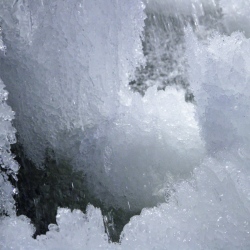
Antarctica’s melting ice sheets have been a major contributor to global sea level increases over the last decade, and the losses are expected to accelerate over the next two centuries. But researchers attempting to study the rate at which these sheets move and melt have been hamstrung by conventional monitoring methods.
That’s why a team from the UBL’s Laboratoire de Glaciologie has gone ahead and connected one such ice sheet to the Internet of Things. Conventional methods of monitoring the rate at which ice sheets slowly slip into the sea (and calve off into icebergs) rely on readings from passing satellites, which can only provide snapshots of the sheet’s movement.
To obtain a more accurate and timely understanding of the situation, researchers from the UBL have installed a series of GPS sensors and phase-sensitive radar along the Roi Baudouin ice shelf in Dronning Maud Land, East Antarctica. These devices will monitor the sheet’s shifts in real-time, providing climatologists with daily, not weekly, updates. What’s more, that data is also delivered to the project’s Twitter feed, @TweetingIceShelf, and broadcast across the Internet.
Earlier this month researchers installed three GPS sensors along a 15 metre-deep depression in the ice shelf. This depression was caused by ice that had already slipped off the underlying bedrock into the ocean, melting from the bottom up and forming massive subsurface cavities. The GPS sensors record their relative positions hourly and upload that data twice daily using a satellite-phone data-link.
